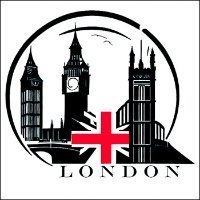New build in Prachin Buri
-
Recently Browsing 0 members
- No registered users viewing this page.
-
Topics
-
-
Popular Contributors
-
-
Latest posts...
-
0
Crime South Korean Arrested for Laundering Cryptocurrency into Gold
Picture courtesy of CH7. Authorities have arrested, on 23 August, a 33-year-old South Korean national, Mr Han, at Suvarnabhumi Airport for allegedly laundering cryptocurrency into gold bars on behalf of an international call centre scam operation. Mr Han, wanted under an arrest warrant issued by the Criminal Court on 6 February 2025, was apprehended while entering Thailand from South Korea. Police also seized a mobile phone containing multiple cryptocurrency accounts and other evidence linked to money laundering activities. The investigation began in late February 2024, when victims seeking extra income responded to social media job postings offering “work from home” packages. Initially, victims performed small online tasks and were paid legitimately. The perpetrators later persuaded them to invest funds with promised returns of 30–50%. Over time, the victims lost access to their investments and realised they had been defrauded. Authorities subsequently conducted a large-scale investigation, searching 20 locations across eight provinces in Thailand. Ten individuals were arrested, including five money launderers and five account holders used to facilitate the crimes. According to police, Mr Han operated as part of a network that converted digital currencies from call centre scams into gold bars. He opened cryptocurrency accounts for a company in South Korea, which received digital funds from the gang. The company then coordinated with local brokers to purchase gold bars, which were subsequently delivered to the call centre network. Investigators estimate that each gold transaction involved at least 10 kilograms of gold. Examination of Mr Han’s accounts between January and March 2024 revealed cryptocurrency receipts totaling roughly 47.3 million USDT (around 1.65 billion baht), believed to have been laundered into gold for the gang. Mr Han denied the charges but admitted to his role in setting up cryptocurrency accounts and coordinating the gold purchases. He is now in police custody, pending further legal proceedings under anti-money laundering and cybercrime laws. Adapted by Asean Now from CH7 2025-08-24 -
1
-
27
THAILAND LIVE Thailand Live Sunday 24 August 2025
Thai Military Attaché Protests Cambodia Border Talks Row Picture courtesy of Amarin The Thai Army, through its Assistant Military Attaché at the Royal Thai Embassy in Phnom Penh, has issued a formal protest after Cambodia was accused of misrepresenting the outcome of recent border security talks. Full story:https://aseannow.com/topic/1370770-thai-military-attaché-protests-cambodia-border-talks-row/ -
49
Landlord didn't pay maintenance fee, now condo keycard locked
there goes 6 months and then some of his rent -
0
Thai - Cambodia Conflict Thai Military Attaché Protests Cambodia Border Talks Row
Picture courtesy of Amarin The Thai Army, through its Assistant Military Attaché at the Royal Thai Embassy in Phnom Penh, has issued a formal protest after Cambodia was accused of misrepresenting the outcome of recent border security talks. The protest follows Cambodia’s release of an English-language document summarising the results of the Regional Border Committee (RBC)meeting held on 22 August in Sa Kaeo province. The meeting involved Thailand’s First Army Region and Cambodia’s Fifth Regional Army. In its publication, Cambodia claimed that both sides had agreed on certain measures, including the removal of barbed wire and other obstacles to facilitate safe passage for villagers and to reduce disruption to daily life. However, the Thai Army stated that such points were not recorded in the official minutes. In a statement released on 23 August, the Office of the Assistant Military Attaché in Phnom Penh stressed that the RBC is a bilateral mechanism designed to address border security issues, not a platform for either side to publish unilateral or distorted information. “The dissemination of misleading interpretations not included in the official report undermines mutual trust and creates misunderstanding between the two countries,” the statement said. Thailand has urged Cambodia to adhere strictly to the jointly agreed minutes of the meeting, with any unresolved issues to be addressed at future sessions of the General Border Committee (GBC) and the Joint Boundary Commission (JBC). Adapted by Asean Now from Amarin 2025-08-24 -
100
Can a Bar Girl Ever Really Understand Kind Generosity?
You’re still I agony over your white guilt. Medical intervention may be necessary. Every Australian I met in country referred to them as “darkies” I didn’t met any homosexuals so I never encountered the attitude you’re giving
-
-
Popular in The Pub



.thumb.jpg.bc523c85a8d558dbc282dca7a2e602c9.jpg)





Recommended Posts
Create an account or sign in to comment
You need to be a member in order to leave a comment
Create an account
Sign up for a new account in our community. It's easy!
Register a new accountSign in
Already have an account? Sign in here.
Sign In Now